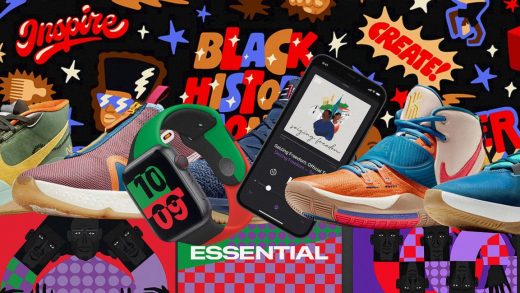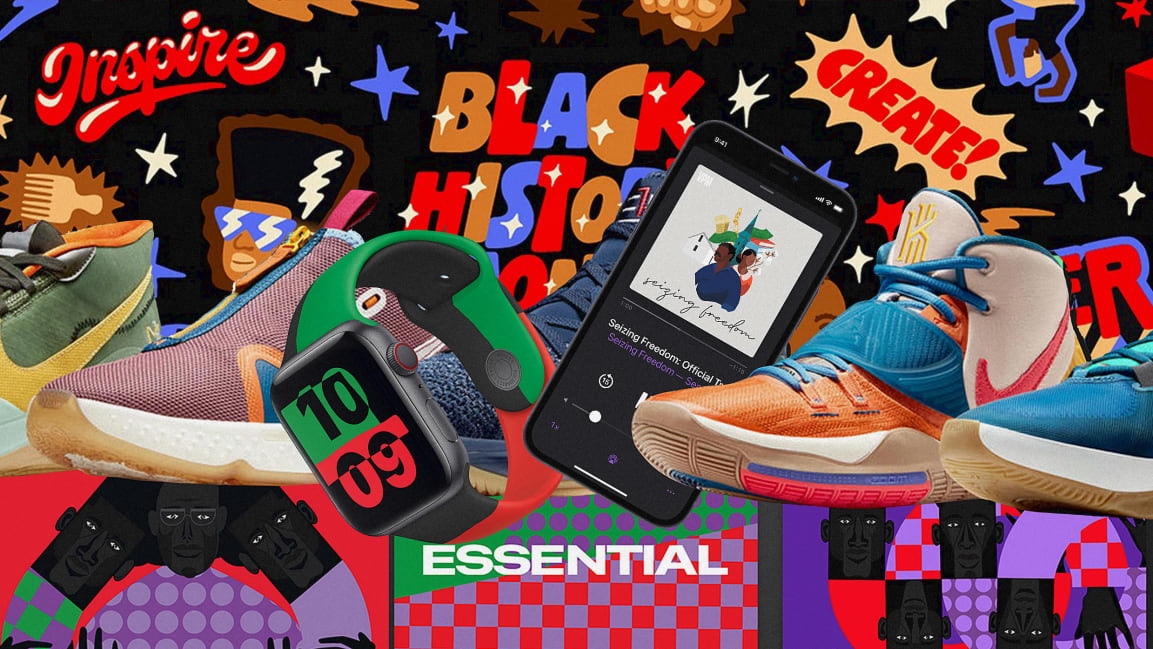Black History Month branding was good. Now companies need to do it for the whole year
If you spent any time on the internet during the month of February, you probably noticed that major companies recognized Black History Month with graphic treatments on their websites and platforms, spotlights on Black makers, and limited-edition launches. YouTube had a new Black History Month-themed logo on the platform each week; Apple launched an array of initiatives; and the NBA partnered with Nike to create new, league-wide warm-up shirts that read “Built by Black History.” Take a look at just about any major brand and, chances are, it used art and design to honor Black history over the past few weeks.
With February in the rearview mirror, it seemed like a good time for a pressure test. Were these authentic branding initiatives, or merely performative? To find out, I spoke with four experts: Maurice Woods, principal design lead at Microsoft and founder of the Inneract Project; Bobby C. Martin Jr., founder of Champions Design; artist and illustrator Jonathan Key; and Schessa Garbutt, founder of creative agency Firebrand.
Most saw Black History Month brand treatments as a good thing—but only when they were backed up by actions and values year-round. As Woods put it, “You ask most people of color, they want a Black history year.”
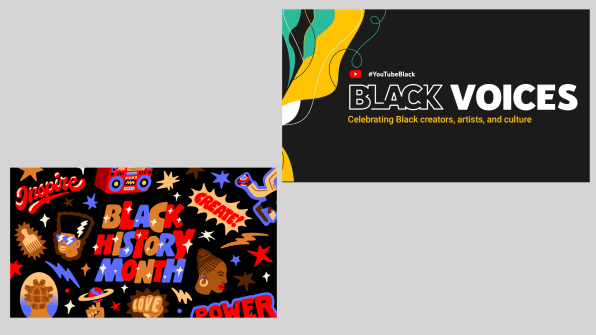
For us, by us
When done well, platform and product design that is done by Black creatives to celebrate Black history is a positive sign of changing times, Martin says. “My feeling is, in most cases, I am so excited to see this happening. To see work that is not only for us, being the Black and brown community, but by us is just amazing.”
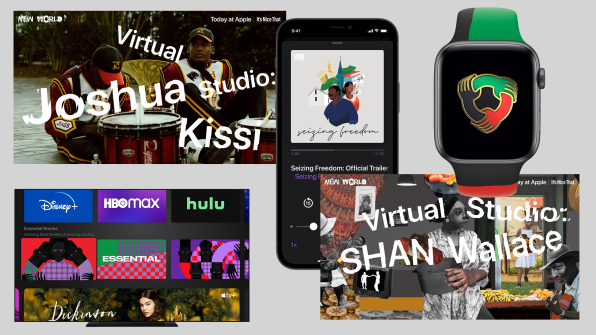
He cites the new Apple Black Unity Collection as an example, which was created by members of the Black creative community and allies, according to Apple’s press release. The collection includes a limited-edition Apple Watch Series 6, sport band, and watch face in the colors of the Pan-African flag. Apple is supporting six organizations working for racial equity as part of the effort, including the Black Lives Matter Support Fund and NAACP Legal Defense and Educational Fund, although it doesn’t disclose how much money is going to the organizations.
“What’s so great about what I see in the Black Unity Collection is that it’s not just a product,” Martin says. “They’ve done a great job of having all their different programs and initiatives dial up and amplify Black stories.” That played out on Apple’s other platforms, like Apple TV and News, which promoted content spotlights that directed users to Black stories. It also launched a monthlong creative workshop series hosted by writer and curator Kimberly Drew.
“What Apple has shown is they’ve taken this initiative, and they’re putting it back into the community in a variety of ways,” Martin says. “I love seeing a company of that scale, with that platform, and their think-different approach, leading the way in corporate America.”
Engage for the long term
But companies need to be engaging Black talent long term. “It’s when it’s integrated into the programming, and some of the proceeds go back to fostering community and equity, and having a very blatant anti-racist approach, that’s what’s exciting about it,” Martin says regarding brands that get Black History Month-related design right. “Because never before—not in the generation before me—could we ever imagine that companies could use their platform to celebrate Blackness in this way.”
There has certainly been progress on some fronts. In January, Apple launched a $100 million Racial Equity and Justice Initiative, which includes plans for an Atlanta-based education hub for historically Black colleges and universities and an Apple Developer Academy in Detroit. But Apple’s diversity stats are dismal. In the company’s most recent diversity report citing 2018 data, Black people made up 9% of its employee base. And as Fast Company reported in February, that data can be misleading. When you filter to tech jobs, representation drops to 6%, and in leadership roles, it’s just 3%—underscoring that even the best of these major brands have steep hills to climb in order to make their values match their messaging.
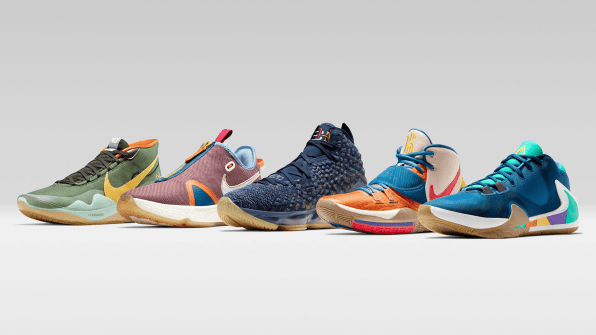
Martin offers the NBA (with which his firm has collaborated over the years) and Nike as examples of brands that have a long track record of centering on Black creativity. This past summer, the NBA and its players union, the NBPA, approved a measure to allow racial justice phrases on the backs of player jerseys. In August, it announced a $300 million foundation “dedicated to economic empowerment in the Black community.” (The first grants, totaling $2 million, were announced in December.) The league also announced a social justice coalition made up of team governors, players, and coaches in November.
A diversity report by the Institute for Diversity and Ethics in Sport on racial and gender hiring gave the NBA an A-. The NBA launched “Built by Black History” pregame warm-up shirts for players, but there wasn’t a themed logo or any other visual treatment on its website. It seemed to be more focused on content: A Black History Month page is dedicated to videos about prominent NBA figures, and some individual teams have produced content of their own.
While Woods of the Inneract Project says he mostly looks to companies that don’t include people of color in their imagery, he notes that the NBA does this well. “The NBA as a brand has done a good job of certifying Black athletes as successful while also standing by its players on social justice initiatives and cultural celebrations throughout the year,” he says. “This is why there are so many Black kids looking to play basketball. The image of the NBA for Black kids is paramount in understanding a track to success.”
Nike, meanwhile, has been offering a custom Black History Month collection of highly coveted sneakers for years (this year’s appear to be sold out.) Last June, it made a $40 million commitment to support organizations working for racial justice, and Michael Jordan and the Jordan Brand, a Nike company, committed $100 million over 10 years to fight systemic racism. The company is giving 20 U.S.-based nonprofits $500,000 in grants and invested $500,000 in Black Girl Ventures. But again, internal representation in leadership roles falls short. According to Nike’s most recent diversity report using 2019 data, just 4.8% of “Directors+” are Black, and 9.9% of VPs are Black.
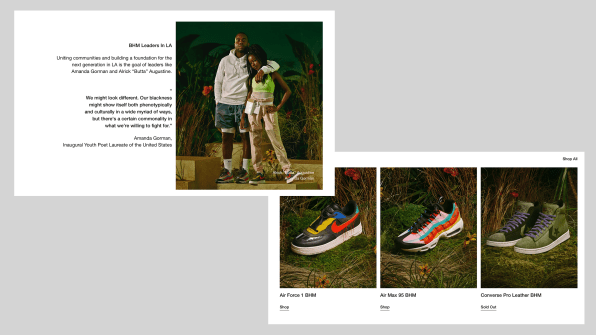
Prove it’s a part of your brand values: make it systemic
Jonathan Key, a designer and illustrator and cofounder of the Brooklyn-based design studio Morcos Key, developed a series of illustrations in recognition of Black History Month for Apple TV. Key, whose work centers on his experience as a Black, queer person from Alabama, and the idea of biological versus chosen family structures, agrees that companies need to match the values that they portray in their marketing.
There are immediate ways that brands can empower Black voices, Key notes. First, if you’re going to commission an illustrator or designer of color, pay them well. Second, give them agency and freedom in the work they’re doing, especially for Black History Month. Third, contact and collaborate with these artists year-round, which means “not just contacting them in mid-January, like, ‘It’s that time of year!’ ” he says.
What Key is getting at is that the engagement has to be systemic. Woods agrees. “It has to correlate with the brand values and something that permeates throughout their culture and their expectation for their culture,” he says. “The progress that needs to be made goes beyond Black History Month. We have a long way to go.”
The NBA aside, it’s hard to find major organizations that have integrated these principles into their business models year-round. In the past year, many companies, as far-ranging as Sephora, West Elm, and Old Navy, have made pledges to achieve 15% Black representation (proportionate to the population) in their companies as part of the 15% pledge started by Brother Vellies founder Aurora James, but they aren’t there yet.
Pass the mic
Corporate America has a lot of work to do during the other 48 weeks of the year. People of color are still vastly underrepresented in business, and although they have made some gains, it is often not in leadership roles. For Schessa Garbutt, the founder of creative studio Firebrand, Black History Month graphic treatments are window dressing. “Very little of the work [that needs to be done] has to do with pixel pushing or graphic design,” she says. “A lot of the work is decentering non-Black voices in this conversation and handing the mic to Black voices, and we’ll actually do it.”
Garbutt, who wrote an essay last summer on brands and Black Lives Matter, says she’d like to see brands hold themselves accountable to make their companies equitable. They could give an update on the commitments they made last summer and celebrate Black History Month by making systemic changes: ensuring employee pay is equitable, promoting and stocking Black-owned businesses year-round, and hiring Black art directors. Otherwise, it’s performance. “There is obviously still a lot more to be done, but it’s cases like this where you can see the power of what’s possible when BIPOC designers and leaders have a seat at the table,” Martin says.
Now let’s see more of it.
(34)

